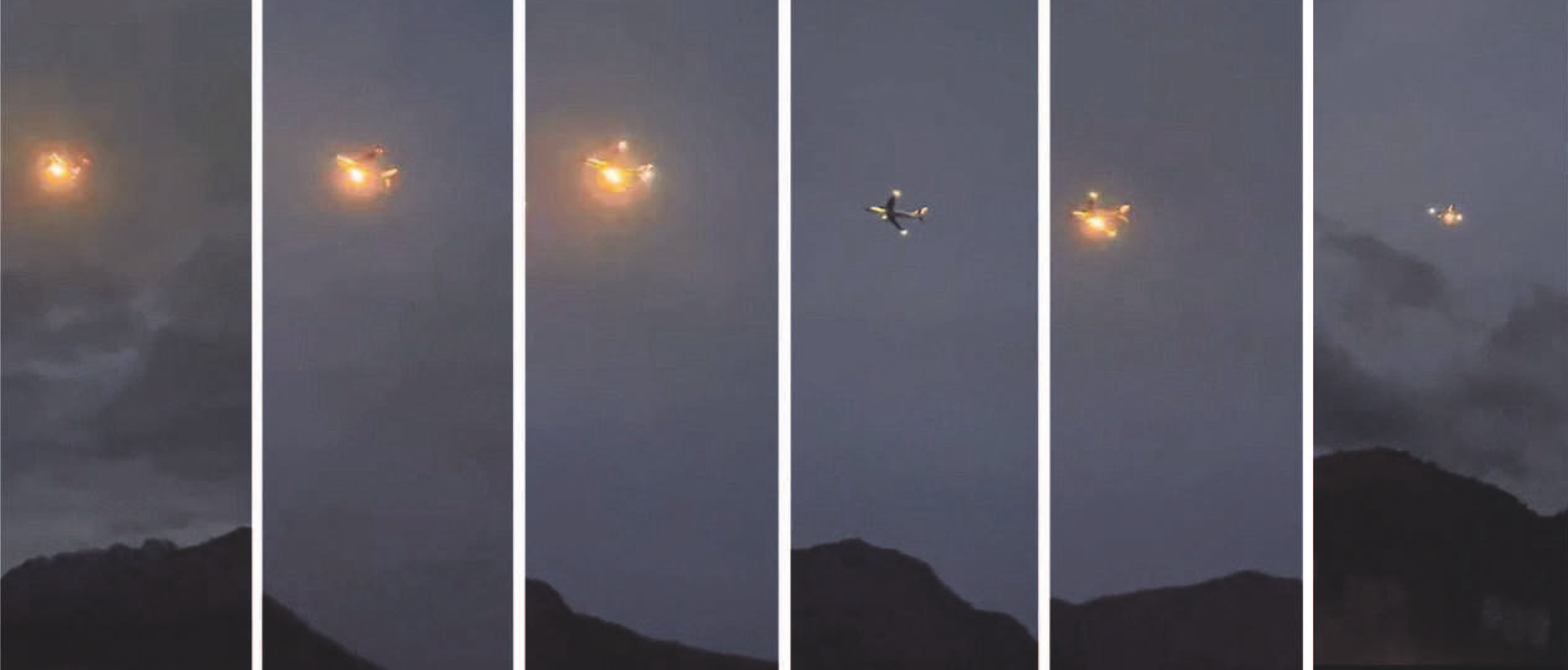The Queenstown Airport CEO has speculated a mallard duck being "ingested" into a plane's engine was to blame for last night's "horrifying" flight out of the resort.
The plane was forced to make an emergency landing in Invercargill after flames were seen coming from an engine of Virgin Australia flight VA148 after it departed from Queenstown Airport at 5.59pm, bound for Melbourne.

A passenger on board the flight told the ODT the experience in the air "was absolutely horrifying".
"We are beyond keen to get home, but no idea what is going on", she said last evening.
Among the crowd of passengers transported to The Langlands Hotel after the flight yesterday were a family heading home to Singapore.
Daughter Serene Ting Gin Luoi said she was very scared after seeing flames from the window of the plane.
Her mother, Chan Su Fang, said she thanked God they were able to land safely.
The mood aboard the flight had been worried, but calm — no-one was crying, she said.
They had no idea what had happened until after the plane landed.
Another passenger described the flight as "one of the scariest events I’ve been through".
Amanda Sutton, who was on the flight as part of a holiday from the United States, said the pilot and crew handled everything well.
"We’re all very lucky to be alive."
Virgin Australia chief operations officer Stuart Aggs told the NZ Herald passengers would be taken back to Queenstown by bus, flown to Brisbane at 4.30pm before leaving for Melbourne at 9.25pm.
A full turnout of emergency services were waiting to meet the plane, which landed safely at Invercargill Airport about 6.50pm.
A Hato Hone St John spokesman said one person was being assessed for minor injuries, but no-one had been transported to hospital.
Mr Aggs said in a statement there was a "possible bird strike" soon after takeoff.
There were 73 people on board the flight, he said.
"Our efforts are now focused on providing support for our guests and crew, as well as transporting and accommodating guests in Invercargill this evening and arranging for their earliest onward travel to Australia," Mr Aggs said.

Lakes Weekly Bulletin said members of the public reported hearing loud bangs and seeing flames coming from one of the engines.
A Queenstown man described hearing what he thought was a car backfiring before seeing the plane, flames shooting from the back as it passed overhead.
Brayden told RNZ most of his street in Shotover Country was out filming the plane as it passed by.
"You don’t really know what to do in that situation. Feel a little bit helpless and sorry for everyone who was on board. Sort of brought the whole street out, basically. Everyone was pretty scared and worried about what was going on."
Hamish Walker said his heart sank when he saw flashes of flames coming from the aircraft.
"It sounded like there was a car backfiring right outside my kitchen window, which is quite bizarre because the road’s at least 100m away.
"And it was just ‘boom, boom, boom, boom’. And then I went outside and realised it was the plane and I could see flames coming from the engine every few seconds."

People took to social media to describe their view of the incident, one person saying it "sounded like it was coming apart over our house. One engine was throwing flames and sputtering out".
Another person who claimed to be on the plane said on social media there had been a bird strike.
They said the pilot made the announcement over the public address system.
"Pilot confirmed us hitting several birds on the way out. We’re now sitting on the Invercargill runway as the fire crews check for damage."
A reporter at the scene at Invercargill Airport described a full turnout of emergency responders ahead of the plane’s arrival.
No flames were visible as the plane was inspected after landing.
Air New Zealand's chief flight operations and safety officer Captain David Morgan told RNZ pilots and cabin crew were trained to deal with bird strike but the situation would be "very disconcerting for the customers".
While the incident would be investigated by both the Civil Aviation Authority and the Transport Accident Investigation Commission, Cpt Morgan said the important thing was they landed safely and everyone was ok.
"It looks like, to me, a bird strike has occurred on take off out of Queenstown and when that does happen it upsets the gas path or the airflow through the engine and that does cause a backfiring that can occur and that causes the flames."

There had been two incidents recorded in Queenstown in the last month, which was pretty typical, he said. Both had been minor.
He speculated last night's incident may have been caused by a mallard duck being sucked into the engine, but mechanics would need to conduct a thorough examination to be sure.
The runway had been swept for birds shortly before the flight's takeoff and there had not been any reports of birds around the airport that day, he said.
The birds most commonly encountered at Queenstown Airport were small, such as finches, and did not pose much risk.
Bird strike could do significant damage to a plane's engine but depended on the size of the bird and what part of the engine was struck.
The plane was able to be flown with only one engine, which meant the pilots were able to divert to Invercargill rather than having to land back in Queenstown, Mr Sowry said. .
The decision to divert to Invercargill had been made by the pilot.
The road into Invercargill Airport was closed by emergency services upon landing.
Passengers were eventually moved from the plane to the airport’s secure lounge, before being transported to Invercargill.
The incident comes a day after two people were injured when a flight from Wellington to Queenstown struck turbulence.
A passenger and crew member sustained moderate injuries.












